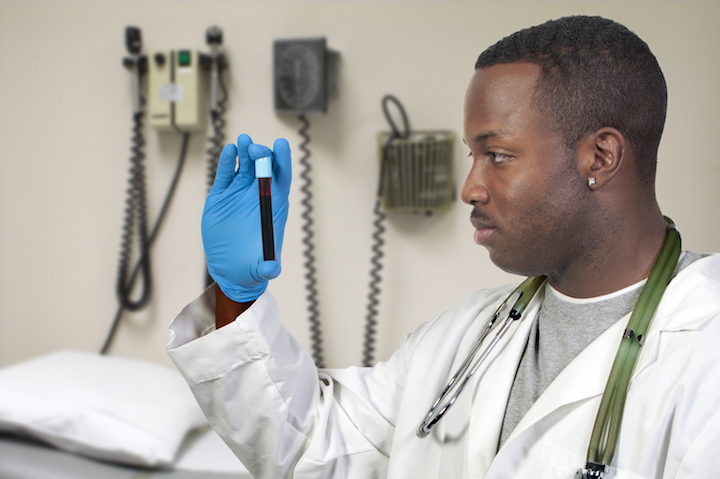As you can see, the significance of a qualified phlebotomist cannot be overstated. To ensure that you’re working with a skilled phlebotomist there are some things you should search for. Your current laboratory provider ought to be CLIA licensed and even greater CAP licensed (the highest accrediting authority in the nation). The lab should have a very long history and ample experience with long term care centers. Lastly the laboratory should provide some form of extensive training program to new that correctly communicate the challenges of working in a long term care setting. Working in cooperation with the phlebotomy team can help to support and provide superior results for our patients, that’s the overreaching goal.
It’s often accepted that over 70 percent of all health care decisions are based on laboratory results and now more than ever those results are utilised to make rehospitalization decisions. To supply a closer look at a number of the challenges faced by long term care providers, let us explore the function of a vital partner in patient care–the phlebotomist. Frequently the phlebotomist is considered only a tool in the health care continuum between the individual and the lab result. Nothing could be farther from the truth; phlebotomists function an under-appreciated part in the management of the individual and, according to their functionality, can really affect the outcome of the clinical outcomes.
For lots of the intravenous antibiotics, timed draws are asked to quantitate the peaks and troughs of the drug concentrations. The standard would be to draw the patient 15 minutes before the next dose (trough or lowest blood level) and 1-2 hours after the conclusion of the IV (peak or maximum blood level). This is a challenge to get a phlebotomist to time their arrival with time for the summit and/or trough when facilities don’t hang the IV antibiotic in the expected time. Such occurrences frustrate both the LTC staff and the phlebotomist who might have another attraction or STAT draw to carry out.
Many LTC facilities are taking a look at performing bedside POC testing for a number of their most time-sensitive and frequently ordered tests. While it might appear easy enough to prick a finger and get a result, the fiscal, documentation and quality control aspects of doing your own testing makes it less appealing.
Article Collection Processing
Each specimen tube or sample collection container must possess two patient identifiers to comply with the CLIA requirement–otherwise the sample has to be reversed and recollected with the correct identification.
However, the catheter has to have the heparin flushed before the blood draw, otherwise the sample might be over anticoagulated. Again, the nurse-collected sample should possess two patient identifiers on the tubes, or the CLIA regulation will need the tube be rejected and recollected.
Only a blood draw?
Each individual has the legal right to refuse to get drawn for blood pressure. While phlebotomists must respect that right, the doctor ordered the evaluation to best manage the patient’s condition, and labs will need to work together with the clinical staff to obey the physicians orders. But if a patient fails a blood draw three
times, the doctor needs to be made conscious and rewrite the arrangement for the scheduled test.
Phlebotomists are often long before the sun rises and endure the components to reach their designated long term care (LTC) facilities prior to the nursing day shift starts. They have to receive their everyday patient draw record and determine
where their patients are located. Often the draw patients may have moved chambers, been discharged home, readmitted into the hospital, or participated in other pursuits. Sometimes, the patients are sleeping or suffering from dementia that restricts their capacity to identify themselves or help out with the ID procedure. It is a CLIA (The CMS regulating body for clinical lab testing) requirement that every individual be identified and verified–through individual self-identification, (like what’s your whole name and date of birth?)
Phlebotomists need to convey the “unable to obtain” to the team, and frequently request a signature for verification from a nurse.
Pre-analytical factors that may impact the procedure
The amount of the blood has to meet fill line criteria; differently the anticoagulant or other additive concentration won’t be suitable for the sample.
The patient’s hydration condition can influence the ease of collecting a blood sample. Bruising is often inevitable, despite the perfect technique.
If a test requires a fasting condition, patients should be drawn before eating that may significantly narrow the time window between when a phlebotomist is permitted in the facility and collection of blood.
Early Day–Locating the Patient
Furthermore, most studies comparing the results to the gold standard venipuncture results of a clinical lab reveal that the POC result as less precise and reproducible. A brief term gain in cost savings can lead to the higher costs of performing STAT retests and also delaying the best possible treatment for your individual.
Often tests are ordered for a patient with non-descript conditions — such as “liver tests” or “clotting tests”, that will need to be clarified before the blood flow, as every test may take a different kind of blood collection tube. By way of instance, a CBC will demand a lavender shirt anticoagulated tube, while a Protime/INR a blue shirt and a CMP will need an SST clot tube.  Frequently phlebotomists continue to six distinct kinds of tubes in their own bag. Moreover, the order that the tubes are drawn is important and can directly impact the final clinical outcomes.
Frequently phlebotomists continue to six distinct kinds of tubes in their own bag. Moreover, the order that the tubes are drawn is important and can directly impact the final clinical outcomes.
Urine and stool samples are normally collected by the LTC facility, but once more must be in the suitable container, labeled with two identifiers, and kept appropriately until picked up and analyzed.
Sickness, car problems and other barriers have a substantial effect unless the day is well equipped with policy. The objective of providing a constant phlebotomist who’s knowledgeable about the patients and facility is always best and the aim in focus for laboratory organizations.
Mixing of the tubes after a successful draw is vital. Clot tubes have to be inverted to clot completely and allowed to set for at least 10 minutes prior to centrifugation. Failure to do so may cause artifactual high cholesterol levels and reduced blood sugar levels.
To review, you want to have the perfect patient, right tube, ideal draw order, complete fill, right time for clot, ideal time for centrifugation and hurrying back the sample to the lab on-time to have results back to the doctor, most frequently on the same day as the patient has been attracted.
These are simply some of the usual day-to-day challenges faced by a phlebotomist which could add time to the process and delay benefits.
Due to the danger of contamination and subsequent infection, most labs require the nursing staff collect blood from a catheter and prohibit a phlebotomist from collecting from these patients.

